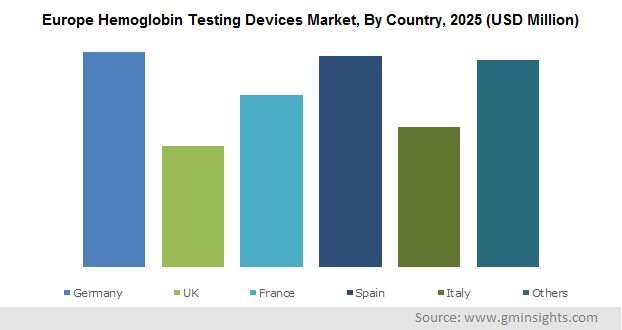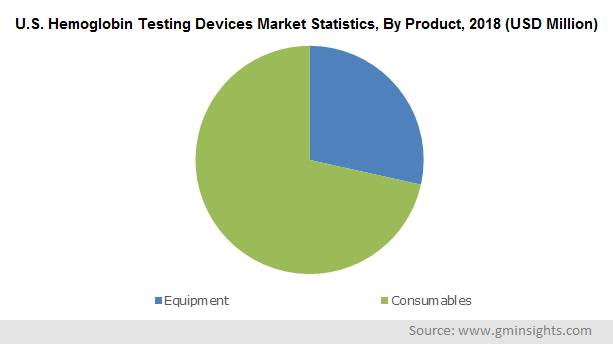Home > Healthcare > Medical Devices > Diagnostic Devices > Hemoglobin Testing Devices Market
Hemoglobin Testing Devices Market Analysis
- Report ID: GMI4415
- Published Date: Nov 2019
- Report Format: PDF
Hemoglobin Testing Devices Market Analysis
Product segment includes equipment & consumables, and the equipment segment is further bifurcated into point of care and laboratory based analyzers. The point of care segment accounted for 81.2% of the market in 2018. Point of care analyzers are used in broad spectrum of healthcare settings across the world. These analyzers provide accurate results in shorter time span, thus augmenting product demand. Danaher’s HemoCue is one the most widely used point of care hematology analyzer in various healthcare settings such as primary care, hospitals and blood banks. Moreover, increasing preference among the population for minimally invasive procedures will further augment business growth during the analysis period.
Hemoglobin analyzers are incorporated with various technologies such as spectrophotometry, chromatography, immunoassay and few others. Spectrophotometry based analyzers are estimated to hold maximum revenue of 2.7 billion in 2025. High growth is attributed to increasing number of companies adopting spectrophotometry as the chief technique for hematology testing. For instance, major players such as EKF diagnostics and Danaher are incorporating spectrophotometry technique for hemoglobin testing owing to its accuracy and efficiency in hemoglobin tests.
Hospitals as an end use are estimated to witness significant growth of 5.5% CAGR across the projected years. End-use segment is further divided into clinics, hospitals, laboratories, home care settings, blood banks and others. Hospitals will witness significant growth owing to presence of state-of-the-art facilities. Moreover, increasing preference among the population of developing economies for hospitals due to cost efficiency will further propel segmental growth. Also, increasing number of hospitals implementing hematology testing across the globe is another chief factor augmenting business growth.

Europe hemoglobin testing devices industry is expected to show significant growth of 5.1% across the forecast timeframe. Increasing prevalence of anemia across the countries of Europe will significantly augment regional growth. For instance, as per World Health Organization (WHO), in Germany, prevalence rate of anemia is over 10% in 2018, and is projected to increase across the forecast timeframe. Moreover, anemia prevalence is even higher among women, with around 50% of women having low hemoglobin levels. Hence, rising prevalence of anemia across the European countries will considerably augment industry growth.
Growing number of research studies to explore novel therapeutic applications will boost the hemoglobin testing devices market growth in North America. The growth of North America hemoglobin testing devices industry is primarily driven by increasing R&D activities associated with hemoglobin analyzers with the aim to deliver better and efficient results. Moreover, presence of major players operating in the U.S. market will further augment business growth.

